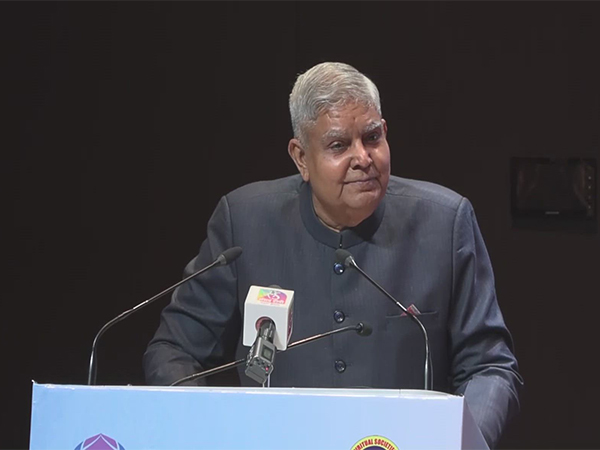A festival in Nepal to stop bedwetting in children
Jul 26, 2022

Bhaktapur [Nepal], July 27 As soon as the effigy of demon deity Ghantakarna falls down sending plumes of smoke into the air with sounds of burning grasses, parents carry their children and make them jump across the fire holding them tightly.
Falling on Trayodashi (third day) of the month of Shrawan (July/August) also known as Ghantakarna Chaturdasi is celebrated in memory of the mythical demon Ghantakarna's death.
Making children mostly infants cross the fire is believed to ward off the habit of bedwetting and also improve their health.
"After the effigy of Ghantakarna is set on fire, the children are made to hop over or take a round on air above it, as it is believed that their habit of crying over things and bedwetting would warden off," GautamPrajapati, one of the elderly resident of Bhaktapur told ANI.
According to legends, the demon Ghantakarna use to terrorize villagers by stealing children and women of the village demanding money and other gifts as a ransom for their release.
His body was painted in red, blue and black and he wore a pair of bells on his ears. He looked very scary and every time he moved, the bells jingled. He got his name from the bells on his ears, i.e. Ghanta meaning 'bell' and Karna meaning 'ears'.
On the day of Gathemangal, locals of Bhaktapur use hay straws to make the effigy using bamboo and tie it with hay straw and other decorative. They stick the carving of Ghantakarna on the weaning board and stick it onto the head to give it proper looks.
"In Newa: language it is called 'Gathamuga:', it's been ages that it is celebrated. Ghantakarna is a demon who used to give a lot of trouble to people living in the community. With heightened trouble people came to the conclusion that it should be dragged and burnt to ashes, this tradition has been followed since then," SherJyapu, another resident briefed.
The fear of dreadful monsters kept people inside their homes most of the time. Even during the season of a plantation, they didn't dare to get out of their home. However, one day, a large number of frogs came to the village and began to croak near Ghantakarna's place.
He became furious but the frogs did not stop. They croaked even louder and when he tried to catch them, they jumped into the water. He, too, jumped into the water without realizing that it was a swamp and soon started to drown. The frogs swarmed around his head and he drowned to death. In this way, the frogs saved the village and the villagers from the demon.
Effigies built in the turnings and roadways of the locality later are dragged and burnt into ashes in areas that lie far from the residential areas, mostly at the crossroads.
This festival also is celebrated as a symbol of cleanliness, even though the garbage inside and outside the house is cleaned and disposed of in a systematic manner. This festival is celebrated by cleaning the garbage by calling it a ghost to get rid of it as it does not pay attention to sanitation during the planting period and various insects are causing grief at this time.
Farmers after cultivation of paddies in Ashar; clean premises as well as surroundings of our house and make Gathemangal using the hay-straws and other decorative. Each of the ward and tole burns the effigy, there's a scientific benefit behind the burning of these effigies; at this time, the weather is fruitful for breeding mosquitos and other insects. Burning of the effigies and hay straws ignites smoke which would shoo off mosquitos, this tradition recurs annually.
On the day of Gathemangal, a person is appointed as a symbol of the offspring of a demon named Ghantakarna and asked to pay for his deeds. It is customary to drive out ghosts by burning torches day and night.
In the evening, the idol of Ghantakarna is dragged to a nearby river and burnt. It is customary to put a three-legged or five-legged fortified iron, brass or copper ring on the doorstep of the house after the bell has rung.

















